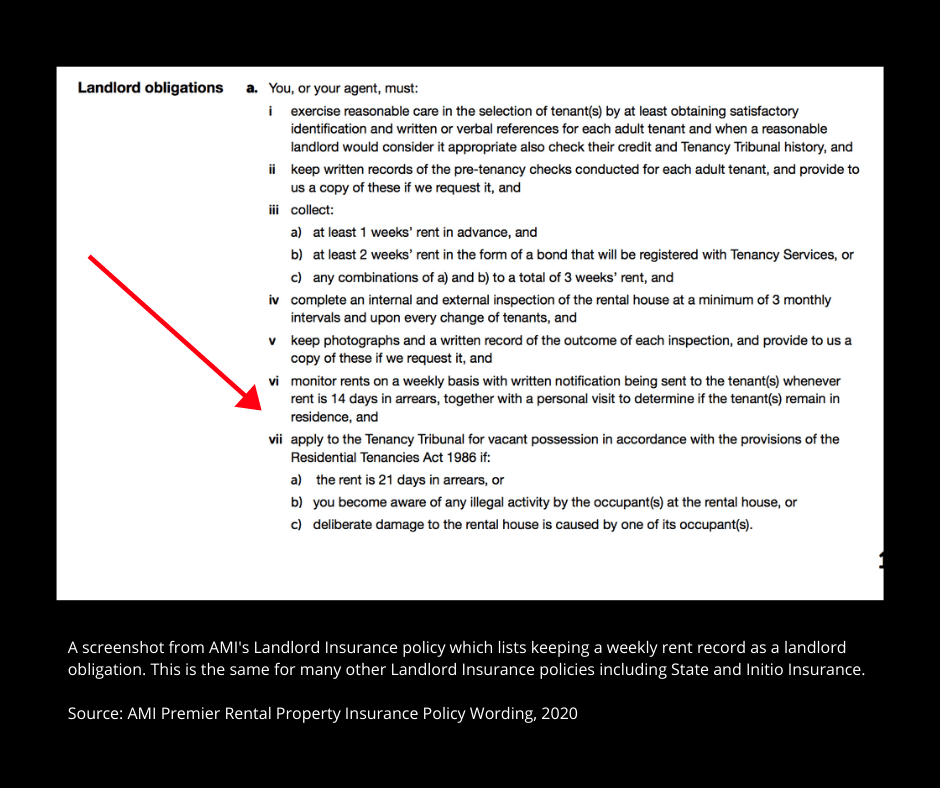The latest news for New Zealand Landlords and Tenants
Different methods of collecting rent – the rise of automated rent payments
Your rental listing is live online, the rent price has been set, and viewing applications are coming in. Before creating any tenancy agreements you need to decide on how you will be collecting rent.
In places like New Zealand, Australia and the UK most people use bank transfers for collecting rent, however, there are several other options available.
If you’re a first-time landlord, we have some helpful tips for you to get started. If you’re an experienced landlord, we will be covering some new tech in rent collection that will help you streamline your processes and make your life much easier.
Let’s start with your obligations as a landlord when collecting and reconciling rent.
There are some rules when it comes to collecting rent that all landlords should be aware of. We summarise these below but you can also check Tenancy Services for more information.
- The tenant and landlord must both agree on how the rent will be collected
- The method of rent collection has to be outlined in your tenancy agreement
- A landlord must give a written receipt for rent when there is no other record available to the tenant
- Landlords need to be keeping up-to-date rent records, and the tenant can ask for a copy of these at any time
- Under new insurance obligations, landlords must be monitoring rent weekly (see image below)

Once you know what your obligations are for collecting and tracking rent, you can start asking other questions that will help inform your decision on how you will actually do these things. Below are some questions that we think will help you make the best decision for both you and your tenants.
Here are a list of the questions we think are relevant when choosing how you collect rent:
- How many tenants do you have?
- How many rental properties are you collecting rent for?
- Are you living near your rental properties?
- Are they driving distance? OR are they in a different country?
- Are you tech-savvy?
- Will you collect rent weekly or fortnightly?
Keeping these questions, and your obligations in mind, we’re going to review four different methods of collecting rent. At the same time we will look at the pros and cons so that you can make a decision on which method is right for you.
Collecting rent in cash
Along with being time-consuming, cash is the riskiest method of collecting rent. Meeting a tenant at a regular time and place and collecting a large amount of cash is not a safe thing to do. By doing this, you’re making both yourself and the tenant a target for robbery.

If you are collecting rent in cash, you need to be providing a written receipt to your tenant immediately. What’s more, keeping paper records of rent is running the risk of these being lost or damaged. Having an excel spreadsheet to track rent payments alongside physical receipts is probably best. This way you also have a digital copy should you misplace or damage the paper one.
If cash is your payment method, you will also want to have a plan in place for what you will actually do with it. Will you bank it weekly? And if the answer is yes, will you be able to physically get the rent each week and go to your bank to deposit it? All of these are things to consider.
Pros
- Regular contact with your tenant when you meet to collect rent means you’re likely to be up to date with any maintenance issues at the property
- Can suit older tenants who are not comfortable with online payments
Cons
- Weekly paper receipts are required for both your tenant and as a record for insurance
- Collecting rent in cash could pose a personal safety risk
- Additional effort required to keep both digital and paper records
- Inefficient if you have multiple properties
- Easy to dispute payment amounts
- You need to collect the rent and deposit it into a bank account in person
- You need to live near your tenants
Collecting rent via cheque
Before the days of Eftpos, online banking and Apple Pay, the humble cheque book was a staple in everyone’s handbag.
Today, cheques are still very popular with older age groups who are not as comfortable using new technology. People who use this method to collect rent often don’t view online payments as secure and don’t trust them. Additionally, there may be other barriers to them using technology such as not having access to a computer or smartphone.

It is important to consider accommodating people who will prefer to pay via cheque, as they could be excellent tenants. However, you also need to be comfortable with the process of receiving rent through cheques and trust that tenants will be able to deposit these weekly.
Cheques are becoming far less common as a form of paying bills and collecting rent. As a result, some New Zealand Banks are phasing them out. Kiwibank are going cheque-free from the 28th of February this year.
Pros
- Cheques can be posted in the mail
- They are more accommodating of elderly tenants
Cons
- The cost of postage is increasing, and delivery days are reducing meaning posted cheques may be late
- Many bank branches in small communities have now closed, there are fewer places for depositing cheques
- Cheques take time to clear in your account, so payment is not immediate
- Kiwibank is phasing out cheques in February 2020, other banks will likely be following suit
- You cannot do this if you are living overseas
- You need to trust that your tenant will write cheques every week as these are not automatic payments
Online payments
Automatic Payments and Direct Debits, what’s the difference?
Automatic payments are a way that your tenants can pay rent online. They are easy to set up through online banking on a computer, or through a banking app on a smartphone. They are similar to direct debits in that the money will automatically be paid to the landlord from the tenant’s account each week, however, automatic payments and direct debits still have their differences. Let’s clarify…

An automatic payment is an instruction that a tenant has given to their bank to make a regular payment of a fixed amount. This can be either for a fixed period of time or indefinitely. Additionally, the tenant has the ability to change the payment amount, date or frequency at any time. This is great as tenants don’t need to remember to pay rent as it will do so automatically and where mistakes might occur in the rent amount or day of payment changes can easily be made.
On the other hand, a direct debit is a regular payment that is approved by an individual but set up and controlled by a business. The business needs to have a direct debit authority form signed by the individual. Using this method, the individual cannot change payment details without notifying the business first and them agreeing to the changes. For this reason, it is unethical to do your rent collection through direct debits.
Some things you need to be considering if you are collecting rent online:
Pros
- Set and forget, payments are automated
- Reliable – no risk of late postage
- Transactions are being recorded on both the landlord and tenant’s bank statements so in the case of an insurance claim you can go here for a record. You also don’t need to provide a receipt for every rent payment as the tenant also has this.
- Can be managed from any location; you don’t need to live near your tenants at all
Cons
- Reconciling payments can be time-consuming
- If you have multiple properties or are being paid into an account that you use to buy other things then the rent payments can easily be lost among the noise. This makes it difficult when insurance expects a clear record for rent and the landlord wants to check that rent has been paid every week.
- Tenants can change payment amounts and frequency at any time
- If your tenant is with a different bank, payments take longer to clear
Automated rent collection
Now that we’ve looked at more traditional ways to collect rent, let’s see what other options exist and that have been created for this purpose.
Much of what used to be a manual process is now being automated. It’s not so long ago that you needed to remember spare change for parking machines while spending a week waiting for a bank cheque to clear from your holiday job. This is the same for the way we collect rent as new automated options are available and are responding to a huge issue in the renting industry: arrears.
Rent arrears are currently making up 20,000 tenancy tribunal orders a year. This has led to tighter insurance obligations around rent records and it has also encouraged a surge of automated rent collection tools that make collecting and tracking rent easy.
How does this work? Well, automated rent collection collects the rent, reconciles payments and receipts your tenant. In addition, you’ll get a notification when the payment is received and on its way to your account.
New Zealand has two services that do this, one is Grove and the other is myRent.
Grove is a new standalone product aimed at self-managing landlords. You can track rent for single or multiple properties.
In contrast, myRent rent tracking is part of a full series of products. Rent tracking is a set cost per month, but you need to have an account with them first.
Both Grove and myRent have different features and processes that make collecting and tracking rent easier for landlords. We compare them below so you can decide which one best suits you.

Pros
- Instant notifications when rent is paid
- Automated rent reconciliation so if rent is late an email is automatically sent to your tenant to notify them. This is great as insurance requires you to send written notification to a tenant when rent is unpaid and in this instance – you don’t even have to remember because Grove will do this for you.
- Up-to-date notifications when rent is missed
- You pay a monthly fee rather than having to sign up for all of their services and paying additionally for these.
Cons
- Older tenants may not be comfortable using this method
- You will pay a fee* to use these services. You need to consider the value you place on your time, and if you want to pay a service to do the work for you
*Currently Grove is in a testing phase, so it is free to use.

Pros
- Instant notifications when rent is paid
- Automated rent reconciliation so if rent is late an email is automatically sent to your tenant to notify them. This is great as insurance requires you to send written notification to a tenant when rent is unpaid and in this instance – you don’t even have to remember because myRent will do it for you.
- Up-to-date notifications when rent is missed
Cons
- Older tenants may not be comfortable using this method
- Some automated methods have security issues, read more here.
- You will pay a fee to use these services. You need to consider the value you place on your time, and if you want to pay a service to do the work for you
Now that you’re well informed on the pros and cons of different methods of collecting rent.
Firstly you need to consider how you will be receiving the money, and how you will be keeping track of payments. Next, decide how involved you want to be with the process of reconciling payments. Lastly, make sure that your method of rent collection is meeting your landlord insurance obligations and your responsibilities as a landlord.
As a result, choosing a method that suits both you and your tenants will be a piece of cake.




